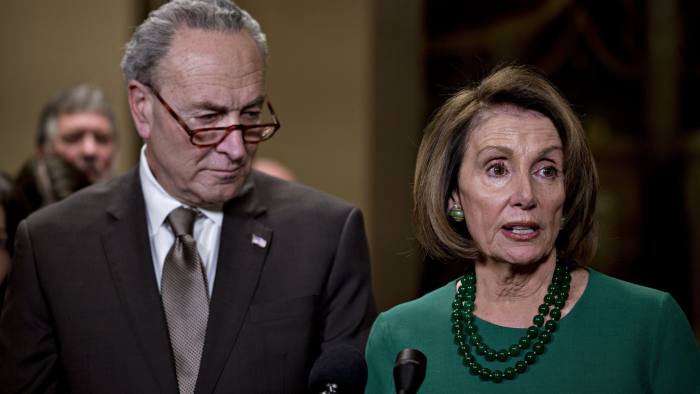Democrats take aim at Trump
January 4, 2019 | Expert Insights

Donald Trump sparred with Democrats on Capitol Hill over ways to end the US government shutdown, as the US president invited congressional leaders to the White House for their first meeting since the budgetary stand-off began on December 22, 2018.
Background
A government shutdown occurs when Congress fails to pass a resolution or the President fails to sign appropriations legislation to fund federal government operations. Since 1976, when the current budget and appropriations process was enacted, there have been twenty gaps in budget funding, eight of which has led to federal employees pay being suspended.
Prior to 1990, funding gaps did not always lead to government shutdowns, but since then the practice has been to close down the government for all funding gaps. This has occurred at the state, territorial and local levels of government.
Government shutdowns disrupt government services and increases cost to the government due to lost labour. Standard & Poor's, the financial rating agency, stated on October 16, 2013, that the shutdown had "to date taken $24 billion out of the economy", and "shaved at least 0.6 per cent off annualized fourth-quarter 2013 GDP growth".
The 2018-2019 Federal Government close down began on 22 December 2018 when the President refused to sign a continuing bill to fund the government. The bill did not contain any allocations for a border wall with Mexico, which was one of his campaign promises.
Analysis
After congressional Democrats said they were preparing to “take action to lead our country out of this mess” with a pair of bills this week to allow funding for the country’s federal agencies, Mr Trump lamented that they had not “allocated” any money for a wall on the Mexican border. “So imaginative! The problem is, without a Wall there can be no real Border Security,” he said.
US media later reported that Mr Trump was asking congressional leaders to come to the White House on Wednesday for a meeting to resolve the stand-off, though it was unclear whether Democrats would accept.
The US government has been partially closed since December 22, over the border funding issue, leading thousands of federal workers to stay home or work without pay, and shuttering museums and national parks.
The Democratic legislation — shepherded by Nancy Pelosi, the likely speaker of the House of Representatives after lawmakers are sworn in on Thursday — would reopen all federal agencies until the end of September, except for the Department of Homeland Security. That department, responsible for border security, would be funded only to February 8 — without any new money for a wall — offering a five-week window for compromise on the issue.
Mr Trump’s invitation of congressional leaders suggests the US president may be starting to feel some pressure to reach an agreement, though he said it was his political opponents that were feeling the heat.
“Border Security and the Wall ‘thing’ and Shutdown is not where Nancy Pelosi wanted to start her tenure as Speaker! Let’s make a deal?”, he tweeted later on Tuesday.
The shutdown has added to a new phase of turmoil in Washington, amid volatility in financial markets, uncertainty over the fate of looming trade talks with China and drama in US security policy following the resignation of Jim Mattis as defence secretary.
Although the macroeconomic impact of government shutdowns tend to be small, they can begin to bite if they endure as federal employees and government contractors experience delayed payments and consumer and business confidence begins to wane.
In addition, President Trump may be hoping that the government shutdown could dominate the congressional agenda at a time when Democrats might otherwise prefer to focus on launching their investigation into wrongdoing inside his administration.
However, House Democrats still believe they have the upper hand in the fight over the shutdown, and their quick moves to tackle the issue are designed to corner Mr Trump, as well as Republican lawmakers in the Senate who are allies of the president.
Assessment
Our assessment is that the government shutdown is a show of strength from the incoming Democratic majority in the House of Representatives. We believe that suspending essential public services for the purpose of scoring political points or fulfilling campaign promises is not a responsible course of action for a government.








Comments